Shunt Modules
Shunt modules are vital for regulating voltages within electronic devices across various industries. With so many structural and operational advantages, it’s essential to secure a reliable and efficient shunt module for your facility.
-
Part Number X500/BG2P0W/C Modules Repair Maintenance and Troubleshooting Service — Replacement Parts Sales
- Model #:
- X500/BG2P0W/C
- Part #:
- X500/BG2P0W/C
-
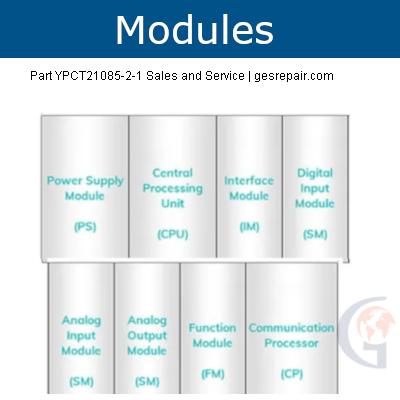
Part Number YPCT21085-2-1 Modules Repair Maintenance and Troubleshooting Service — Replacement Parts Sales
- Model #:
- YPCT21085-2-1
- Part #:
- YPCT21085-2-1
-
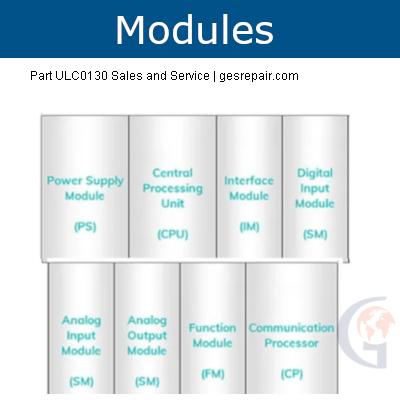
Part Number ULC0130 Modules Repair Maintenance and Troubleshooting Service — Replacement Parts Sales
- Model #:
- ULC0130
- Part #:
- ULC0130
-
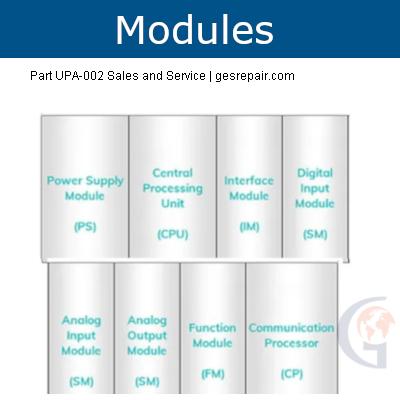
Part Number UPA-002 Modules Repair Maintenance and Troubleshooting Service — Replacement Parts Sales
- Model #:
- UPA-002
- Part #:
- UPA-002
-
Part Number SVLST16/4 Modules Repair Maintenance and Troubleshooting Service — Replacement Parts Sales
- Model #:
- SVLST16/4
- Part #:
- SVLST16/4
-
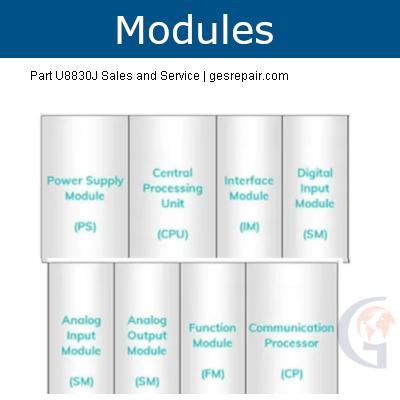
Part Number U8830J Modules Repair Maintenance and Troubleshooting Service — Replacement Parts Sales
- Model #:
- U8830J
- Part #:
- U8830J

What Is a Shunt Module?
To understand the function of a shunt module, you must first know the basics of a shunt. Shunts are electronic devices used to redirect currents in a circuit. They create a low-resistance path, allowing an electrical current to pass through the circuit to a different location. These elements are often used to protect circuits against overvoltage, bypass electrical noise and evade defective devices.
Shunt modules, also known as shunt regulators or linear regulators, are voltage regulators that use regulating elements to divert, or shunt, the currents to the ground through variable resistance. Shunt modules function by continuously delivering voltage across terminals while taking up the surplus electrical current to maintain a suitable voltage across the load.
A resistor works with the voltage source to operate the load as the shunt regulator is positioned parallel to it. To ensure the voltage is constant, the series resistor draws the proper current level. The load will intake some of the voltage, leaving the remaining current for the shunt module to acquire. At minimum load current, the shunt regulator will pass through the full current, and at maximum current, the element will withdraw little to no current.
Benefits of Using Shunt Modules
Shunt modules are dependable elements with the power and control necessary to regulate load currents in numerous electronic devices. When you purchase a shunt module for your industrial facility, you can experience performance and efficiency like never before. Some of the many advantages of shunt regulators include:
- – Overvoltage protection: Some shunt modules have safeguards in place that prevent overvoltage from occurring within a circuit. This eliminates the risk of hazards like power surges and minimizes damage to the device.
- – Cost efficiency: Shunt regulators have minimal components, meaning these elements typically cost less than larger, more complex regulators.
- – No switching element: Unlike switching regulators, shunt modules do not require switching elements to manage regulation. Without these components, users eliminate the need to invest in pulse-width modulation (PWM) drivers for larger transistors.
- – Low noise levels: Because shunt regulators don’t contain a switching element or transient current draw, they generate minimal noise. You can dampen existing sound levels by using filtration to suppress the electromagnetic interference (EMI) between the input and output.
- – Minimal output ripple: A shunt module’s transistor and Zener diode work together to enable wideband current regulation up to the transistor’s appropriate bandwidth, resulting in low output ripple for as long as the input current remains below a specific size.
- – Reliable regulation: Shunt regulators are known to have excellent regulation capabilities when handling a broad load current and input voltage range.
Applications of Shunt Modules
Shunt modules are highly versatile components, making them suitable for shunting currents for numerous industrial devices. Linear regulators like shunt modules are often used in applications with low currents, noise sensitivities, budget limitations or minimal space.
When you purchase shunt regulators for your facility, you can use them for any of the following applications:
- – Sink circuits
- – Voltage power supplies
- – Amplifiers
- – Current source circuits
- – Internet of Things (IoT) devices
- – Precision current limiters
- – Digital circuits
- – Analog circuits
- – Headphones
- – Low output voltage switching power supplies
- – Automotive applications
- – Consumer electronics
- – Voltage monitoring
- – Adjustable voltage power supplies
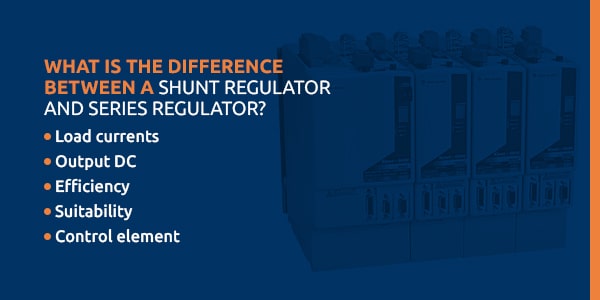
What Is the Difference Between a Shunt Regulator and Series Regulator?
Though shunt and series regulators are the two primary types of voltage regulators, not everyone knows the differences between them. The main distinction between these elements lies in how each regulator connects to the load to control the output voltage. As their name suggests, series regulators join in series with the load to stabilize the voltage. On the other hand, shunt modules connect parallel to the load.
Other major differences between shunt modules and series regulators include:
- – Load currents: Shunt regulators are known for their proficient voltage regulation capabilities at high load currents. Series regulators, however, are not nearly as effective at these higher currents.
- – Output DC: The output DC voltage remains constant within shunt regulators, whereas it is variable in series regulators.
- – Efficiency: Each regulator has differing strengths regarding load current ranges. Shunt modules exhibit higher efficiency when handling low load currents, while series voltage regulators are better suited for higher load currents.
- – Suitability: Series and shunt regulators have varying competencies when it comes to load volumes. Shunt regulators are better equipped to handle lighter loads, whereas series regulators are more appropriate for heavy loads.
- – Control element: Both regulators differ in their control element functions. In shunt modules, the control element sustains the load voltage across it, making it a high-voltage, low-current device. Conversely, a series regulator’s control element carries the load current, making it a high-current, low-voltage device.
What Are the Different Types of Shunt Modules?
There are two primary types of shunt modules users can choose from — Zener diode shunt regulators and transistor shunt voltage regulators.
Zener Diode Shunt Regulators
Zener diode regulators are one of the simplest and most common forms of shunt modules. These devices use Zener diode circuits to regulate output voltages and exhibit fairly straightforward operation.
Once the Zener diode exceeds its small minimum current, it maintains nearly constant voltages across its terminals. Then, the series resistor within the circuit transports the voltages from the source to the Zener diode and load, where the diode remains unaffected by any load current fluctuations. The module assumes the required current to ensure voltage drop across the series resistor and shunts the current to maintain consistent voltage across the load.
Transistor Shunt Voltage Regulators
Transistor shunt regulator circuits occur when the input and resistor join in series with a transistor displaying collector and base connections to a Zener diode. Both the resistor and transistor should be positioned in shunt, or parallel, with the load.
The working principle for transistor shunt regulators is as follows. The unregulated DC voltage reverse biases the Zener diode’s Zener voltage. Then, a resistor is connected in series with the Zener diode to limit the Zener current. A transistor connects parallel to the load resistor to control the device and shunt a portion of the supply current from the load.
When operating, the transistor must pass through the current at all times to ensure that the shunt regulator exhibits optimal performance. Unlike Zener diode shunt regulators, the voltage remains fixed, meaning any changes in load voltage will have a corresponding impact on the base-emitter voltage.
Purchase High-Quality Shunt Modules for Your Industrial Facility Today
Discover shunt modules that suit your application needs at Global Electronic Services. We serve our customers with competitive prices, exceptional customer service and 18-month service warranties with every solution.
Get a quote on one of our shunt regulators today!
